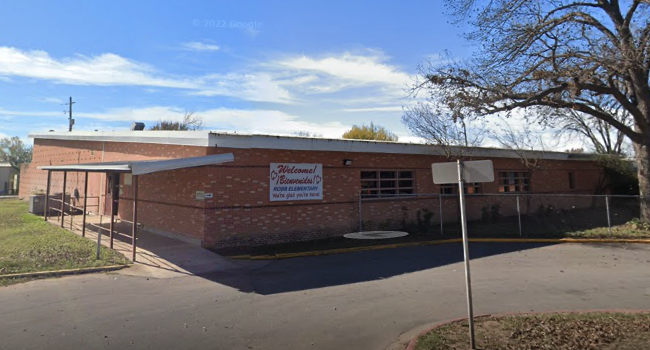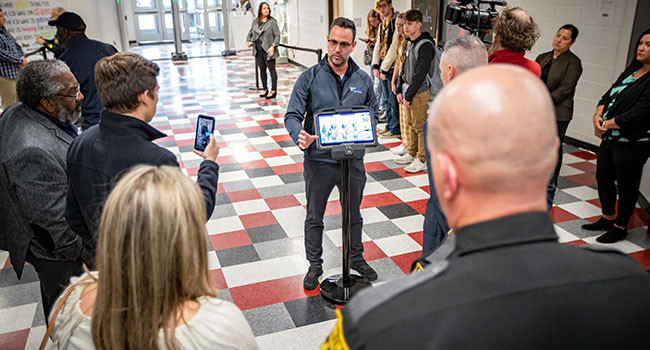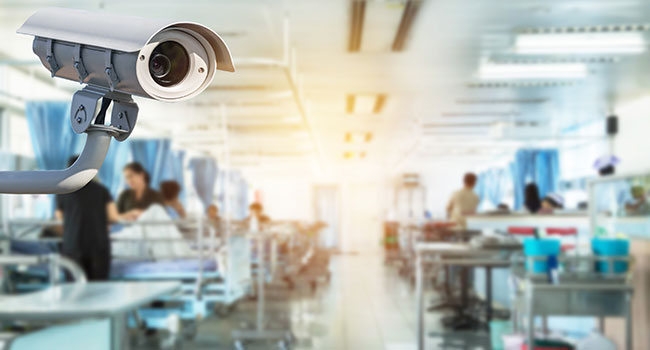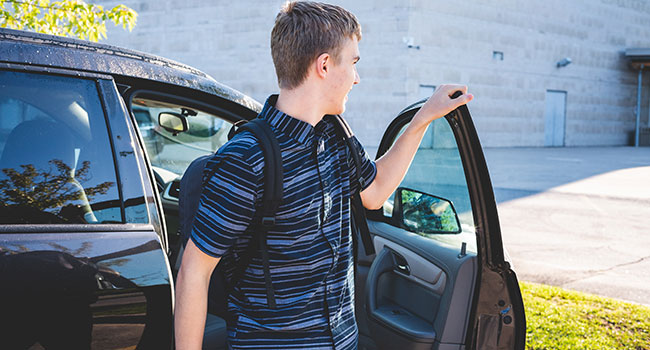Artificial Intelligence Technology Solutions, Inc., and its subsidiary Robotic Assistance Devices (RAD) recently announced that it will extend its “Bailey’s Gift” initiative to include the “Bailey’s 5” campaign, according to a news release.
- By Matt Jones
- January 24, 2023
National news reports that two students were shot and killed at a Des Moines, Iowa, charter school on Monday afternoon.
- By Matt Jones
- January 23, 2023
A gunman’s assault on a Washington, D.C., city bus on Wednesday left three people injured, including two elementary-school-aged children travelling home from school, according to national news.
- By Matt Jones
- January 12, 2023
National news reports that the mother of the Uvalde, Texas, school shooter was arrested and faces accusations of threatening to kill the man she was living with.
- By Matt Jones
- January 09, 2023
A teacher at an elementary school in Newport News, Va., was shot on Friday, according to national news. She was transported to a local hospital, and the severity of her injuries has not yet been released.
- By Matt Jones
- January 06, 2023
Local news reports that several teenagers arrested in Donna, Texas, have admitted to planning a school shooting.
- By Matt Jones
- June 24, 2022
Local news reports that Southern Methodist University in Dallas, Texas, recently partnered with multiple local police departments for active threat situation training.
- By Matt Jones
- June 13, 2022
National news reports that a man who tried entering a Gadsden, Ala., elementary school while a summer program was in session was shot and killed by police on Thursday morning.
- By Matt Jones
- June 10, 2022
National news reports that a felon wearing body armor was reported as an active shooter and sent a North Carolina community college into lockdown on Tuesday, June 7.
- By Matt Jones
- June 07, 2022
K–12 districts in Minnesota are reviewing products from SafeWood Designs, which manufactures bullet-resistant products—including doors, wall panels, hardware systems, furniture, and even whiteboards—for schools.
- By Matt Jones
- June 02, 2022
Active Shooter
School administrators, public officials, and law enforcement need to act immediately to prevent the recent tragedy in Uvalde from happening again in our schools.
School districts in North Texas are increasing security after last week’s shooting in Uvalde, Texas, that killed 19 students and two adults.
- By Matt Jones
- May 31, 2022

On Sunday, May 29, the U.S. Department of Justice announced that it will be conducting a review of local law enforcement’s response to the shooting at Robb Elementary School last week.
- By Ralph C. Jensen, Matt Jones
- May 24, 2022
One spring day during my sophomore year of high school, I brought a gun to school.
- By Matt Jones
- May 23, 2022

Today’s learning environments are radically different than those of last year and require flexible and interactive technology for adapting campus spaces to new ways of learning.
- By Darryl Krall
- May 23, 2022

With so many students working together in close quarters, schools can be breeding grounds for infection. But as studies routinely show, simple interventions can substantially reduce absenteeism by providing a healthy, productive learning environment for students, teachers and staff.
- By Dr. Gene Cole
- May 23, 2022

There’s no question that the COVID-19 pandemic changed our lives overnight.
- By Curtis Linton
- May 23, 2022

Safety and security at one West Virginia school district has officially evolved. Fayette County Schools in Fayetteville, WV, recently received and installed three weapons screenings systems from Evolv Technology during the inaugural round of the company’s GiveEvolv grant program.
- By Matt Jones
- May 23, 2022
Access to intelligible, clear audio has never been more important with educators and students back in classrooms across the nation.
- By Paul Romero
- May 23, 2022
Pandemic-related disruptions exacerbated existing disparities in student learning and well-being, which disproportionately hurt low-income students, students with special needs and school systems that are under-resourced.
- By Magen McGahee
- May 23, 2022

A combative walk-in takes a swing at security staff. A distraught stranger attempts to abduct a newborn. A clueless motorist blocks the ambulance lane. Hospitals face a daily array of security issues.
- By Paul Baratta
- May 23, 2022

Recent statistics highlight the rise of cyberattacks in the public sector. In its latest Internet Crime Report, the FBI stated that they received nearly 2,500 ransomware complaints in 2020.
- By Justin Himelberger
- May 23, 2022

Road traffic in campus communities has increased significantly over the past few years as more people are driving to campus. At the same time, parking spaces have become more limited or restricted.
- By Michael Bradner
- May 23, 2022
When it comes to how to best protect students, it’s common that people focus on increasing building security and safety. However, people often don’t realize the very real threat of medical emergencies occurring in schools.
- By Danielle Myers
- May 23, 2022

School infrastructure has faced significant challenges over the past few years. Take the push to prioritize ventilation upgrades because of COVID-19, or the onslaught of natural disasters increasing in severity.
- By Steve Roth
- May 23, 2022
EF Johnson Technologies, which supplies communication technology to emergency responders, recently announced two new faces among its senior leadership.
- By Matt Jones
- May 17, 2022
Local news reported in March that a school officer from the Kenosha Unified School District in Kenosha, Wis., placed his knee on a 12-year-old student’s neck to restrain her during a fight in the school cafeteria. CNN reported last week that the student is now facing disorderly conduct charges related to the incident, according to her family lawyer.
- By Matt Jones
- May 16, 2022
The University of Kentucky in Lexington, Ky., recently announced a partnership with Salient Systems to deploy a new video management system, CompleteView VMS. A press release notes that the solution ties together more than 3,000 cameras into a central location to improve video monitoring and situational awareness around campus.
- By Matt Jones
- May 05, 2022
A fight at North Forney High School in Forney, Texas, on Monday afternoon sent a teen suspect and an officer to the hospital, local news reports.
- By Matt Jones
- April 19, 2022
A suspect involved in a shooting at Erie High School in Erie, Pa., on Tuesday turned himself into the Erie Police Department on Wednesday, according to national news.
- By Matt Jones
- April 07, 2022